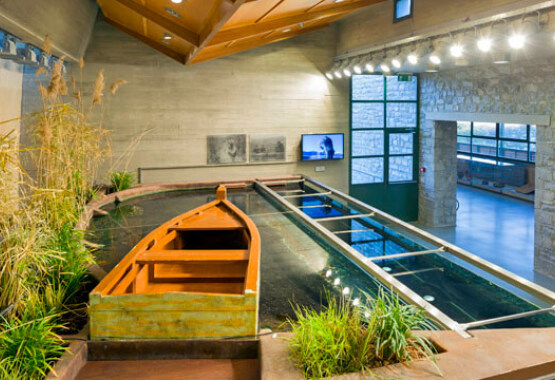
AROUND GREECE
Experience this rich tapestry as you journey through Greece’s historical, cultural and artistic wonders. Wander along cobbled lanes steeped in myth, savour authentic flavours at a sunlit taverna, and feel the echoes of the past come alive in every monument, melody and ritual.
Proudly home to numerous UNESCO World Heritage Sites, Greece meets the highest standards of universal significance, offering travellers the chance to connect with humanity’s shared heritage in unforgettable ways.
The monuments in Greece included on UNESCO’s list are:
When a monument is inscribed on the UNESCO World Heritage List, it signifies the international community’s commitment to preserving and promoting it for generations to come. Greece — the cradle of Western civilisation — takes great pride in showcasing this remarkable heritage. Visitors are invited to admire these splendid monuments, to walk in the footsteps of history, and to reflect on the unique human brilliance that achieved such extraordinary feats of progress. Come and experience these cultural treasures for yourself, and let Greece’s timeless spirit inspire you.
World Heritage Sites UNESCO
At the crossroads of ancient civilisations, Greece beckons you to step into a living mosaic of history, art and culture — a vibrant patchwork waiting to be experienced. Here, every stone whispers a story: in the graceful columns of timeless temples, the charming streets of age-old villages, the intricate crafts and culinary traditions passed lovingly through generations.Experience this rich tapestry as you journey through Greece’s historical, cultural and artistic wonders. Wander along cobbled lanes steeped in myth, savour authentic flavours at a sunlit taverna, and feel the echoes of the past come alive in every monument, melody and ritual.
Proudly home to numerous UNESCO World Heritage Sites, Greece meets the highest standards of universal significance, offering travellers the chance to connect with humanity’s shared heritage in unforgettable ways.
According the UNESCO’s official website: "The monuments included on the World Heritage List are selected and approved on the basis of their value as the best examples of human creative genius. They exhibit an important interchange of human values and bear a unique or at least exceptional testimony to a cultural tradition or to a civilization which is living or has disappeared. They are directly linked to important stages in human history and for this reason they have outstanding universal significance and are a part of mankind’s common heritage".
The monuments in Greece included on UNESCO’s list are:
- the Temple of Apollo Epicurius at Bassae in the Peloponnese (1986),
- the Acropolis archaeological site in Athens, Attica (1987),
- the Archaeological site of Delphi in Central Greece (1987),
- the Sanctuary of Asklepios in Epidaurus in the Peloponnese (1988),
- Mount Athos (1988),
- the Mediaeval City of Rhodes (1988),
- Meteora in Thessaly (1988),
- the Paleochristian and Byzantine monuments of Thessaloniki (1988),
- the Archaeological site of Mystras in the Peloponnese (1989),
- the Archaeological site of Olympia in the Peloponnese (1989),
- the Archaeological site of Delos in the Cyclades Islands (1990),
- the Monasteries of Daphni in Attica, Hosios Loukas in Central Greece and Nea Moni of Chios in the North Aegean Islands (1990),
- the Archaeological site of Pythagoreion and Heraion on Samos Island (1992),
- the Archaeological site of Aigai (Vergina) in Macedonia (1996),
- the Archaeological sites of Mycenae and Tiryns in the Peloponnese (1999),
- the Historic centre in Chora, the Monastery of Saint John Theologos and the cave of the Apocalypse on Patmos Island (1999),
- the Old Town of Corfu (2007),
- the Archaeological Site of Philippi (2016)
- the Zagori Cultural Landscape (2023) and
- the Minoan Palatial Centres (2025).
When a monument is inscribed on the UNESCO World Heritage List, it signifies the international community’s commitment to preserving and promoting it for generations to come. Greece — the cradle of Western civilisation — takes great pride in showcasing this remarkable heritage. Visitors are invited to admire these splendid monuments, to walk in the footsteps of history, and to reflect on the unique human brilliance that achieved such extraordinary feats of progress. Come and experience these cultural treasures for yourself, and let Greece’s timeless spirit inspire you.

